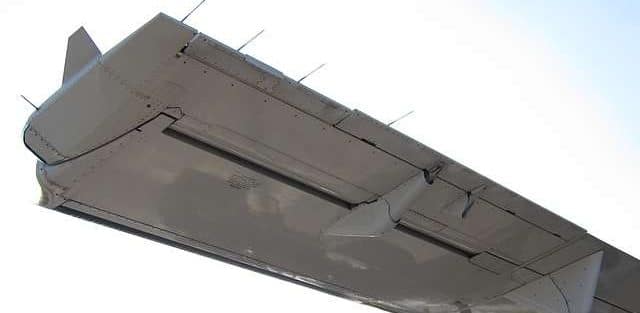AILERONS

Aileron is a French word for ‘little wing,’ and it refers to the small, hinged wing located on the trailing, outboard edge of a wing. They’re typically located as close to the wing tip as possible to maximize their movement potential. When a charter plane moves around on its longitudinal axis, the ailerons are responsible for this movement. This movement is usually referred to as banking or rolling. Ailerons are interconnected and used to increase and decrease the air velocity on either wing. When one aileron lifts, the opposite will move downward. Also, when the air moves across the raised aileron, the velocity is decreased. And then as the air moves over the aileron in a downward position, the wind passes smoothly over the wing increasing the air velocity. This allows one side of the charter plane to lift and allow the charter plane to switch directions.
The History of the Ailerons
First patented by British scientist and inventory Matthew Piers Watt Boulton in 1868, ailerons have changed the way pilots control their aircraft during flight. By 1911, most biplanes were built using ailerons. By 1915, ailerons had become commonplace on monoplanes as well.
Aileron is a French word for ‘little wing,’ and it refers to the small, hinged wing located on the trailing, outboard edge of a wing. They’re typically located as close to the wing tip as possible to maximize their movement potential. When a charter plane moves around on its longitudinal axis, the ailerons are responsible for this movement. This movement is usually referred to as banking or rolling. Ailerons are interconnected and used to increase and decrease the air velocity on either wing. When one aileron lifts, the opposite will move downward. Also, when the air moves across the raised aileron, the velocity is decreased. And then as the air moves over the aileron in a downward position, the wind passes smoothly over the wing increasing the air velocity. This allows one side of the charter plane to lift and allow the charter plane to switch directions.
The History of the Ailerons
First patented by British scientist and inventory Matthew Piers Watt Boulton in 1868, ailerons have changed the way pilots control their aircraft during flight. By 1911, most biplanes were built using ailerons. By 1915, ailerons had become commonplace on monoplanes as well.








